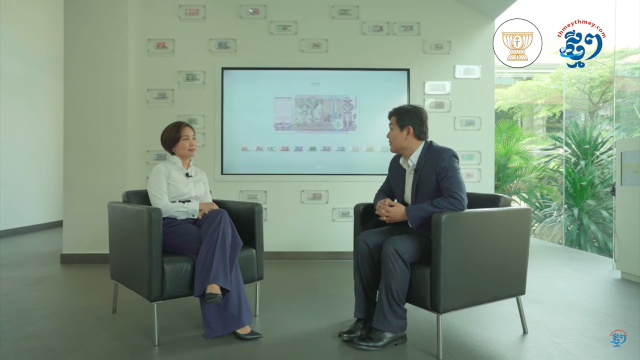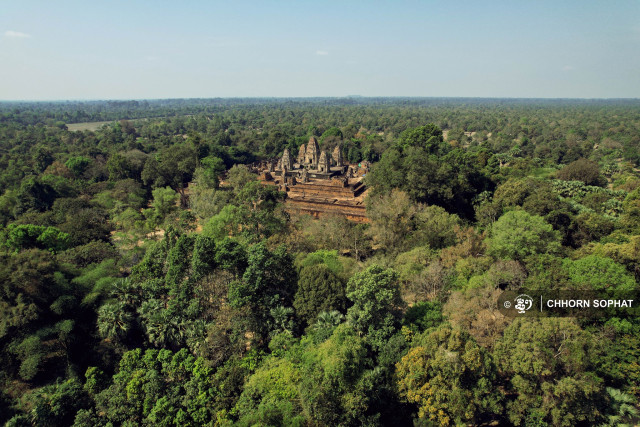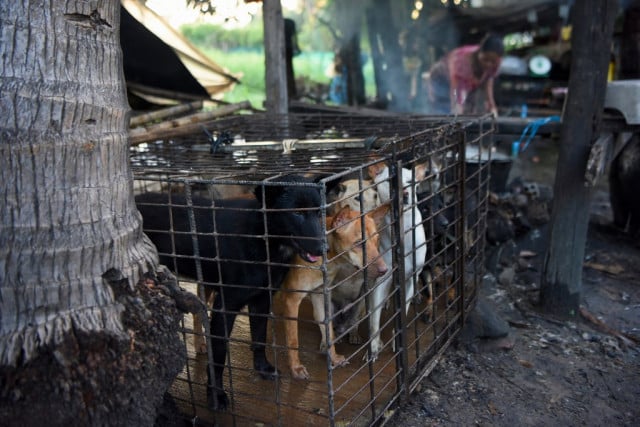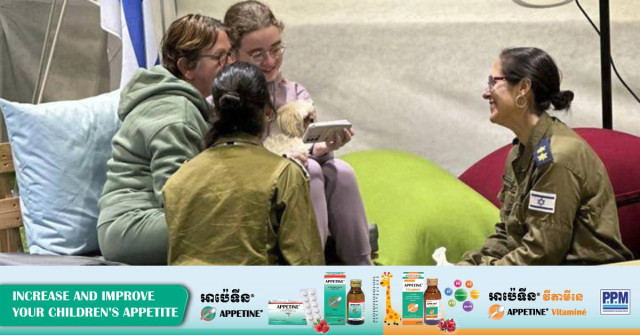Getting Real with Riel: Reasons Behind Promoting Khmer Currency

- By Leang Delux
- September 9, 2023 2:00 PM
PHNOM PENH - Due to geopolitical uncertainties decades ago, people’s confidence in the Khmer riel plummeted which gave rise to the popular use of US dollars even for day-to-day transactions. Along the way, various measures have gradually increased the use of riel both physically and, more recently, virtually.
Chea Serey, governor of the National Bank of Cambodia since 2023, took Leang Delux, publisher of ThmeyThmey News and Cambodianess, on a tour of the Preah Srey ICANAVARMAN Museum (SOSORO Museum) in Phnom Penh to explore different aspects of the country’s currency.
Leang Delux: How did the changes of political regimes interfere with the value of the Khmer currency?
Chea Serey: Regardless of countries, the use of money is about trust. Money is basically paper. However, behind it lies the trust of the people in which they know that they will get something in return from that money. Here, trust is very powerful. The value of the currency is lost when people lose trust in the institution that prints that money. Whenever there is a change in political regime, the people’s trust will more or less be impacted which can decrease or increase the value of that nation’s currency. Cambodia was also facing a lot of political regime changes. During the French colonial era, we used piastre. Afterward, [during Sangkum Reastr Niyum period] we used “riel” and our confidence in that currency made it valuable. Later on, during the Lon Nol [Khmer Republic] period, the currency became devalued. The US bombing, the conflicts, both inside and nearby our country, made people lose faith in the currency. During the Pol Pot [Khmer Rouge] regime, the riel was out of the topic. In the following periods, the riel was revived but people were still very much concerned about its value. Overall, there was a lot to be done to restore people’s confidence in the riel.
_1694235320.png)
Leang Delux: Before, we used to have one riel note. Now, the largest one is the 100 thousand riel note. Why does the denomination increase over time?
Chea Serey: During the 1980, we printed the one riel denomination equivalent to four cups of uncooked rice. Plus, it was also easier to count. Back then, to buy something that was worth half a riel, we had to tear the money in half. In a more distant past, elders also break the coins in half for similar reasons. However, we do not do it now. Over time, inflation happens and goods become more expensive. When the smaller denomination becomes out of use, we need to print bigger denominations to reflect the current situation. The stability of currency is a main component of money. In the last 20 years or so, Cambodia has maintained its currency value around 4,050 riels or 4,100 riels to one US dollar. We have achieved this stability far greater than any other country in the world.
_1694235382.png)
_1694235513.png)
Leang Delux: The US dollar has been in our circulation since the 1990s. As for now, why is there a need to encourage Khmer people to increasingly use riel?
Chea Serey: Why is there a relationship between currency, sovereignty and independence? Talking about the economy alone, when we use other nation’s currency, we are at the mercy of their economic influence. The US can set the value of their own currency for their own demands. They do not pay attention to whether that value affects Cambodia or not. That is normal. They need to prioritise their own economy. Sometimes, their political agenda can impact us. Without our own currency as a tool, we lose our independence. The impact on the economy will also interfere with politics. The use of riel will allow the central bank to come up with agendas to sustain the economy in the long run. On the other hand, this is also about national pride. When we travel abroad, we exchange their currency. Yet, when they come here, why do they not need to do the same? When they use our currency, they also get to see our history and culture which are imprinted on the notes.
_1694235639.png)
Leang Delux: Despite the effort of promoting riel, relatively speaking, people are still more or less using the US dollar. How do you approach that?
Chea Serey: If we have not done what we have done so far, perhaps the riel could have been out of use already. What we have done along the way is to make sure that our currency is stable, good looking and of higher quality. We have also made sure that the money is hard to counterfeit alongside campaigns to recycle older notes. With Bakong electronic wallet, users will be equipped with both riel and US dollars accounts even though their payroll is given only in US dollars. At the same time, it could also be psychological. When people are used to using US dollars, they do not want to switch to riel as our currency has larger denominations making them harder to count. Some people also raise the idea of eliminating three zeros from the note. However, it is very much easier said than done. In doing so, we need to collect every single banknote in regulation. Plus, every accounting system, regardless of private or public, has to follow new protocols. The confusion resulting from this switch might as well produce a greater loss than if the system were not to be changed in the first place. We also encourage private sectors to label their products or generate the employees’ payroll in riel. Some comply with the new standard while others decide to go with both currencies.
_1694235682.png)
Leang Delux: Could the action of not using riel be punishable by law?
Chea Serey: Some countries do extend administration control on those who label products or accept payment in other currencies. Nevertheless, this also creates issues of its own. Those with US dollars in their hand, besides changing it, will spend it outside the country instead. Too much tension on the rule can also affect our economy in a different manner. It is more sustainable if the people can show their love toward riel by their own intention and their own practice. Using US dollars does provide us some economic benefit. We can safely manage our inflation thanks in parts to the use of US dollars. It is not about de-dollarization, but it is about encouraging the use of riel. In our economy today, around 85% is US dollars and the remaining 15% is riel. We do not take away US dollars if it is not the wishes of the private sector.
Leang Delux: What is the desired percentage?
Chea Serey: I, personally, cannot know for sure too. However, we would not strictly implement administrational regulation. It is more about people's love for riel. Nevertheless, we try our best to promote riel and to keep it at a percentage where our currency can be kept safe. With the constantly changing world, coming up with a fixed distribution between US dollars and riels can be hard.
Conducted in Khmer for ThmeyThmey News, the interview was translated by Ky Chamna for Cambodianess News.
Part 1 of the interview: Could the Khmer Currency “Riel” be Named After a Fish?
Related stories: The Sosoro Museum: Where Learning about Cambodia’s History—through Money—Turns Exciting
This interview was posted in Khmer on ThmeyThmey Media YouTube channel on March 13, 2023.















